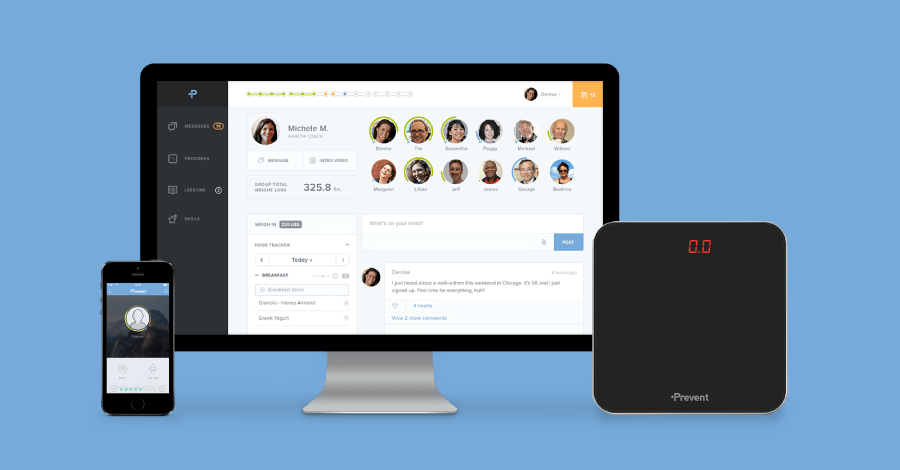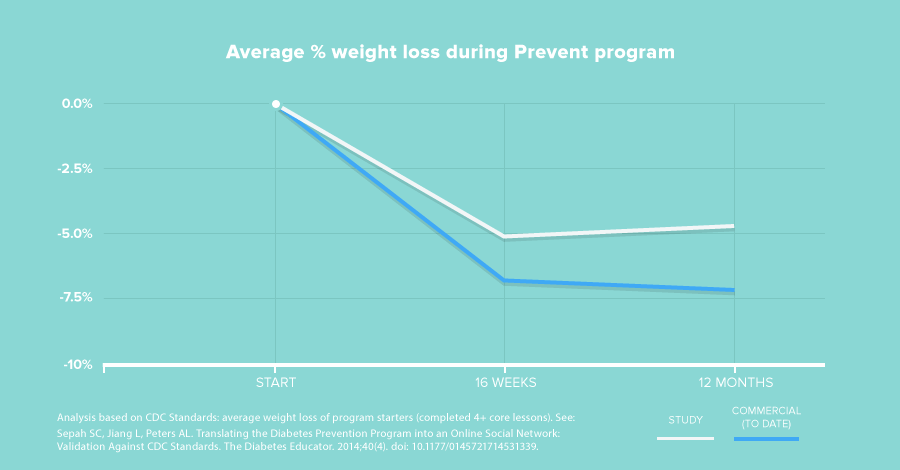At a16z, we bet on entrepreneurs who use software to go after the big problems. And the United States certainly has one on its hands: namely, the growing health care spending crisis. In 1970, the cost of health care accounted for just 7% of America’s GDP. But over the next 40 years, it rapidly ballooned to a whopping 17% of the nation’s GDP. By 2010 the total bill from public and private health care expenditures constituted $2.8 trillion, or nearly $9,000 per person, a figure which is projected to double over the next 10 years. 75% of those costs were related to chronic diseases like diabetes, and diabetes itself (and related complications such as heart disease, stroke, vision loss, and kidney failure) accounted for almost 10% of all health spending. In fact, according to the CDC and American Diabetes Association, more than 26 million adults and children now have type 2 diabetes, the most common form of the chronic disease, and the numbers are growing at a frightening clip (Figure 1). Can we really use software to help bend — or even reverse — this dangerous curve?
 Figure 1: The American diabetes epidemic.
Figure 1: The American diabetes epidemic.
What’s even more astonishing than the growing prevalence of diabetes is that of prediabetes. Affecting one in three Americans, prediabetes is a condition in which blood glucose levels are higher than normal, but not high enough for a diagnosis of diabetes. However, without treatment, there is a very high probability that those with prediabetes will progress to type 2 diabetes within ten years.
Importantly, we have a good idea of what that treatment should be. In 2002, the NIH sponsored a study which found that dropping as little as 5-7% of one’s body weight (just 10-14 lbs for a 200 lb person) can delay or even altogether prevent diabetes. The study also established weight loss as the key factor in diabetes prevention, over and above pharmaceutical intervention with metformin. As they note:
The Diabetes Prevention Program (DPP) was a major multicenter clinical research study aimed at discovering whether modest weight loss through dietary changes and increased physical activity or treatment with the oral diabetes drug metformin (Glucophage) could prevent or delay the onset of type 2 diabetes in study participants. At the beginning of the DPP, participants were all overweight and had blood glucose…levels higher than normal but not high enough for a diagnosis of diabetes—a condition called prediabetes.
The DPP found that participants who lost a modest amount of weight through dietary changes and increased physical activity sharply reduced their chances of developing diabetes. Taking metformin also reduced risk, although less dramatically.
In other words, weight loss was more efficacious than a powerful drug. This should be unsurprising to anyone who’s heard a physician say that “if fitness were a drug, we’d prescribe it for everyone.”
But losing weight and getting in shape are easier said than done, and this is where Omada Health enters the picture. Omada has built one of the very first digital therapeutics: a clinically validated, peer-reviewed, reproducible, and scalable way for people to treat a condition over an internet connection. Specifically, Omada’s Prevent product (Figure 2) is a clever combination of science, software, design, and hardware, which blends the online and offline to achieve clinically meaningful behavior change.
Figure 2: The Omada Prevent program is a deceptively simple combination of a friendly social weight loss competition with a wireless scale. Crucially, the only way to update progress in the program (i.e. progress towards goal weight) is by stepping on the scale.
Here’s how it works. Users enroll at the Prevent website, with costs partially or fully defrayed by their insurance. They then receive a zero-configuration wireless weight scale in the mail along with access to a Facebook group-like interface with 11-15 similarly situated peers. The product begins with what can be conceptualized as a four-month social game, where people engage in a friendly competition among their small group to get 100% of the way towards their goal weight through proper exercise and diet tracking. Weekly lessons on diabetes prevention are mixed in with the program, and web and mobile apps provide notifications and positive peer pressure. A dedicated health coach (something like a virtual personal trainer meets nutritionist) keeps everyone on track, checking in via text messages and voice calls with participants as needed to bolster their motivation. And packages are mailed along the way as welcome surprises to memorialize progress milestones.
Crucially, the only way to update your weight in the Prevent interface is through a measurement on the wireless scale. Entering it in manually is not allowed, thereby making progress much more difficult to fake. This blend of online and offline seems like a little thing but brilliantly solves several problems that have long bedeviled previous attempts in the space.
Specifically, a pure online approach tends to run into the “Do You Even Lift” phenomenon, where people post on weightlifting forums or toy with fitness apps in an aspirational way without actually hitting the gym. By contrast, a pure offline approach tends to run into the “New Year’s Day” phenomenon, in which people buy quantified self devices and treadmills in a fleeting burst of motivation and then leave them to collect dust.
But by combining all the pieces — the mobile and desktop apps, the uncheatable wireless scales, the social network of peers, the milestone packages, and the virtual health coach, Omada has used software to knit together twelve people, twelve scales, and one coach into an omnipresent virtual community focused on weight loss. And the results are impressive, as seen in Figure 3.
Figure 3: As demonstrated in a peer-reviewed scientific publication (to appear in The Diabetes Educator), Omada’s Prevent program achieved clinically-significant weight loss results. Here, the white line represents the weight loss achieved by Prevent’s study participants while the blue curve represents more recent weight loss results by Prevent’s commercial participants to date. Note that while many weight loss interventions show weight regain over time, Prevent’s average weight loss is sustained over one year.
Omada Prevent’s clinical results were so impressive that Kaiser Permanente’s venture arm decided to invest alongside Andreessen Horowitz in this round. And they weren’t the only payor that was impressed. Because diabetes patients can cost up to $20,700 to treat per year, major employers and insurance providers across the country are teaming up with Omada in an effort to save billions of dollars and are more than happy to pay a fraction of that cost to treat diabetes in exchange for positive clinical outcomes.
Finally, the scale of the opportunity for Omada to make a difference is enormous.
Thinking horizontally in terms of market size, while diabetes in the US alone costs us more than $245 billion per year, the epidemic is global, with more than 380 million people affected in 2013. As a digital therapeutic, Omada’s solution is readily internationalized and scalable to other countries.
Thinking vertically in terms of application areas, we believe that the combination of positive social accountability with a desirable clinical endpoint (in this case, weight) measured by a difficult-to-cheat quantified self device (e.g. the wireless scale) may be a fundamental technique for developing digital therapeutics that can be applied to many other chronic conditions. Programs for hypertension, insomnia, and smoking cessation are just a few of the possibilities; if we can deliver weight loss over an internet connection, suddenly anything that involves serious behavior change is a possibility. And once a digital therapeutic works for one condition, it can be scaled to the world at the speed of software to help bend and then reverse the dangerous cost curves which we referenced above.
So that’s why we’re excited to announce our investment in Omada Health, where I’ll be joining their board and helping them build software that may ultimately play an important role in getting the world to stop eating. And eating. And eating.



